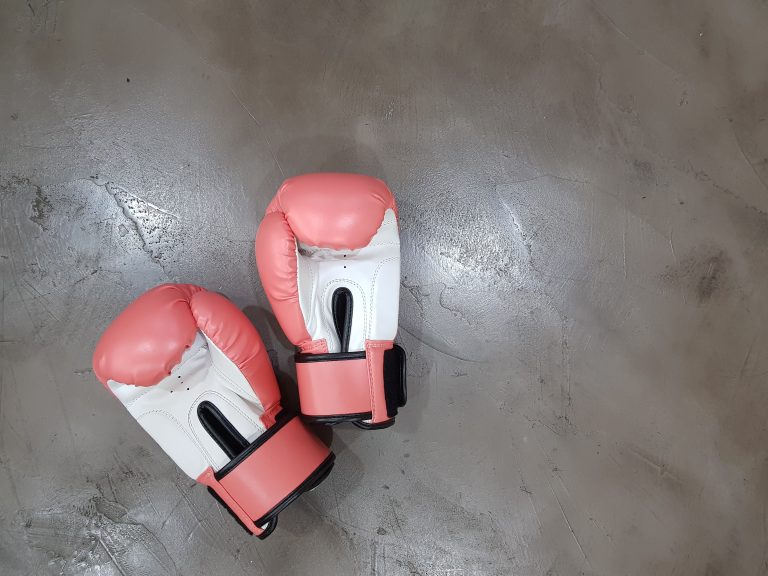What is Stripe Testing in Karate?
Stripe testing is an essential component of Karate, a martial art that originated in Japan. At its core, Stripe testing serves as a means to measure the level of proficiency of Karate students in their respective styles, including the techniques and katas as well as the philosophy and ethics that underpin the martial art. This testing process helps practitioners achieve greater focus, discipline, and skill, thereby honing their abilities as martial artists. In this blog post, we explore the intricacies of Stripe testing in Karate and what it entails.
The Basics of Stripe Testing in Karate
Karate is often associated with the colored belts worn by practitioners, which serve as an indication of rank and seniority. The highest level one can achieve in Karate is the black belt, which is a symbol of mastery and expertise. However, the journey towards the coveted black belt is long and arduous, and students must progress through a series of Stripe tests to demonstrate their proficiency and knowledge.
During Stripe testing, students are evaluated based on their mastery of various techniques, katas, and proper execution. Each test has a specific set of requirements tailored to the individual’s skill level, and students must demonstrate their proficiency in front of a panel of judges or sensei.
The Importance of Stripe Testing
Stripe testing serves a critical role in the development of the martial artist. It provides a tangible way for students to measure their progress and accomplishments, allowing them to stay motivated and focused on their goals. By passing a Stripe test, students gain a sense of achievement and pride that fuels their drive to continue practicing and improving.
Furthermore, Stripe testing helps students identify areas where they need to improve, allowing them to focus their efforts on mastering specific techniques or katas. Students learn progressively more challenging techniques as they progress through the ranks, and Stripe testing ensures that they have a solid grasp of each area before moving on to the next.
The Different Levels of Stripe Testing in Karate
In Karate, there are typically ten Kyu (rank) levels for beginners, ranging from the lowest (10th Kyu) to the highest (1st Kyu). After attaining the 1st Kyu rank, the student is eligible for the coveted black belt. However, Karate styles may differ in the number of Stripe levels required to attain Kyu rank.
Each of the Stripe tests builds on the knowledge and techniques learned in the previous tests, increasing in complexity and difficulty. The first several Stripe tests are focused on the foundational elements of Karate, such as basic stances, blocks, and punches.
As the tests progress, students are required to demonstrate mastery of more complex techniques, such as kicks and katas. Additionally, they must show an understanding of the philosophy and values of Karate, including respect, humility, and discipline.
The Benefits of Stripe Testing in Karate
Stripe testing in Karate provides numerous benefits for students, including:
1. Sense of accomplishment: Stripe testing allows students to see their progress and accomplishments in black and white, giving them a sense of achievement and pride.
2. Motivation: Passing a Stripe test motivates students to continue practicing and improving their skills, promoting good habits of self-discipline and effort.
3. Goal setting: Stripe testing serves as a tangible goal for students to work towards, helping them focus their efforts and set achievable targets.
4. Feedback: Stripe testing serves as an opportunity for students to receive constructive feedback on their performance, highlighting areas for improvement and ensuring that they have a solid foundation of skills.
Understanding Stripe Testing in Karate
Karate is a martial art that is known for its intense physical workouts and various forms of training. The technique combines both defensive and offensive moves, with the aim of mastering self-defense. Stripe testing is a critical aspect of karate training that helps to measure one’s progress and abilities. In this article, we will focus on answering some of the most commonly asked questions on stripe testing in karate.
What is stripe testing in karate?
Stripe testing is a form of evaluation where students take a test to determine their proficiency in karate. It involves a series of physical and mental assessments to measure a student’s understanding of techniques, blocks, and strikes. The tests are conducted at specific intervals and involve the demonstration of learned techniques, forms, and sparring sessions. If a student succeeds in the stripe testing, they earn a stripe on their belt, which serves as evidence of their hard work and dedication to the art.
How frequent is stripe testing in karate?
The frequency of stripe testing in karate varies from school to school. In some schools, it may be every four months, while in others, it could be as frequent as every month. The timeline for testing depends on the student’s level and proficiency, the school curriculum, and the instructor’s discretion. For beginners in karate, stripe testing usually occurs every three to six months, while advanced students may take tests every two to three months.
What happens during a stripe testing in karate?
During a stripe testing session, students demonstrate their proficiency by performing various techniques, blocks, strikes, and forms. The testing also involves sparring sessions and other physical activities that test the student’s stamina, reflexes, and agility. The testing may also include a written exam where students have to answer questions on karate techniques, philosophy, and traditions.
What is the purpose of stripe testing in karate?
The primary purpose of stripe testing in karate is to evaluate and measure a student’s proficiency and understanding of the art. It helps to identify the areas in which a student needs to improve and to determine whether or not they are ready to move on to the next level. Additionally, stripe testing can serve as an excellent motivational tool as students work towards earning belts, stripes and advancing through the ranks. This way, they can track their progress and see their performance improve in real-time.
How do I prepare for a Stripe testing in karate?
To prepare for the stripe testing in karate, it is essential to attend classes regularly, practice consistently, and remain disciplined. The best way to prepare for testing is to focus on mastering the techniques, blocks, and strikes that the instructor has taught. Also, make sure to train regularly, get adequate sleep and follow a healthy diet.
What is Stripe Testing in Karate?
If you want to integrate online payment systems into your web application or e-commerce platform, then Stripe is one of the best options for you. Stripe is a developer-friendly payment processing provider that makes it easy to handle online payments in your application. It is also a popular payment gateway that supports all payment types, including credit cards, debit cards, and mobile wallets.
If you’re developing with Stripe, it is essential to ensure that your payment processing code is running smoothly without any errors. Stripe provides comprehensive programmatic testing tools via their API, but it may not be sufficient to guarantee that your integration is error-free. To overcome such issues, you can use the Karate testing framework to test your Stripe integration.
In this article, we will discuss what Stripe testing in Karate is and how you can perform it step by step.
Why Should You Test Your Stripe Integration?
Testing your Stripe integration is essential for various reasons.
First, it helps you identify errors and bugs in your payment processing code. This is crucial because payment processing is a critical component of your application, and any error here can cause your users to lose money or become frustrated with your application.
Second, testing your Stripe integration helps ensure that your payment processing code meets PCI (Payment Card Industry) Compliance standards. PCI Compliance is essential for all businesses that accept credit card payments online. It ensures that your payment processing code is secure, and it protects your customers‘ sensitive payment information from being exposed to potential security breaches.
What is Karate?
Karate is an open-source testing framework that makes it easy to write automated tests for web services. It is simple to use, and it allows you to write tests in plain English using a simple Gherkin syntax. Karate supports REST, SOAP, HTTP, and other web protocols.
Karate also provides a built-in assertions library that is specifically designed for testing web services. It simplifies the process of testing web services by providing a rich set of assertions and techniques that allow you to test responses and ensure that they meet your expectations.
How to Test Stripe Integration in Karate?
Now that we have discussed the importance of testing your Stripe integration and what Karate is, let’s dive into how you can test your Stripe integration using Karate.
Step 1: Set up Your Test Environment
Before you can start testing your Stripe integration in Karate, you need to set up your test environment.
First, ensure that you have the latest version of Karate installed on your machine. For installation instructions, refer to the official Karate documentation.
Next, create a new folder for your test project and initialize it with a new Maven project.
Step 2: Create Your Test Scenarios
Once your test environment is set up, you can start creating your test scenarios. The first step is to create a new Karate feature file by right-clicking on your project folder and selecting the „New“ option. Name your feature file, e.g. „StripeIntegration.feature.“
In the feature file, write down the test scenarios that you want to run against your Stripe integration. For example, you can test the following scenarios:
– A successful payment transaction
– An unsuccessful payment transaction due to insufficient funds
– A refund transaction
– And so on
Once you have written your test scenarios, you can implement the necessary Karate code to interact with the Stripe API.
Step 3: Write Karate Tests
To write your Karate tests for Stripe integration, create a new Karate test file, which should be saved under the same directory as your feature file.
In the Karate test file, import the necessary Stripe API credentials and write the test code to interact with the Stripe API.
For example, to test a successful payment transaction, you can write the following code:
„`
Feature: Successful Payment Transaction
Scenario: Successful Payment Transaction
Given url ‚https://api.stripe.com/v1/charges‘
And header Authorization = ‚Bearer sk_test_12345678‘
And request {„amount“: „2000“, „currency“:“usd“, „source“:“tok_visa“}
When method post
Then status 200
„`
This code sends a request to Stripe’s API to charge a credit card with an amount of $20.00. The API response is then validated by checking that the response status code is 200.
Similarly, you can write test code for other scenarios such as an unsuccessful payment transaction and a refund transaction.
Step 4: Run Your Karate Tests
Once you have written your Karate test code, you can run your tests by executing the Karate test runner. To do this, navigate to your project’s root directory in a terminal and type the following command:
„`
./mvnw test
„`
This command runs all the unit tests in your project, including the Karate tests you just wrote.
If all your Karate tests pass, it means that your Stripe integration is working correctly.
Conclusion
In conclusion, testing your Stripe integration using Karate is a crucial step in ensuring that your payment processing code is error-free and meets PCI Compliance standards.
By following the steps outlined in this article, you should be able to write and run Karate tests to test your Stripe integration effectively.
Remember to always test your payment processing code thoroughly before deploying it to production to ensure the best user experience for your customers.
Inhaltsverzeichnis






